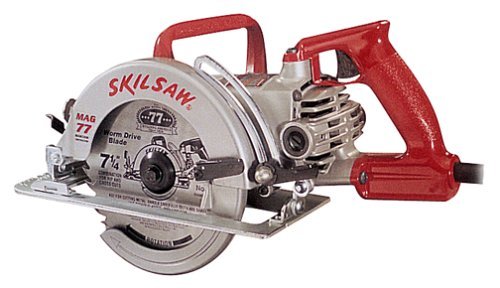What Is a Circular Saw?
A circular saw is a go-to cutting tool found in just about every workshop, jobsite, or garage. It’s a handheld power saw that uses a rotating round blade to cut through wood, plastic, metal, and even masonry, depending on the blade. Circular saws are ideal for framing, decking, trimming, ripping plywood, and making quick, straight cuts. They're fast, efficient, and easy to control once you get the hang of it.
You’ll find both corded and cordless versions. Corded saws offer more consistent power and are better for long sessions or heavy-duty use. Cordless saws are all about portability and convenience—no cords to trip on, unplug, or accidentally cut through.
History of the Circular Saw
The circular saw dates back to the late 1700s, with the earliest known versions invented in England for lumber processing. Over time, the design was adapted into a handheld tool, and by the early 20th century, it became a jobsite staple. Skil was one of the first major manufacturers to popularize the portable circular saw, which is why some people still call any circular saw a “Skilsaw.” Today, nearly every major tool brand makes a version, each with their own tweaks and features.
What It’s Used For
Circular saws are all about straight cuts, fast, clean, and repeatable. Common uses include:
With the right blade, they can also handle metal, tile, and masonry, but most users stick with wood.
What to Look for When Buying
Here’s what matters when choosing a circular saw:
- 1Corded vs. Cordless: Corded gives you unlimited run time and more power. Cordless offers freedom and portability but eats through batteries fast on heavy cuts.
- 2Blade Size: The most common is 7 1/4". This size gives you deeper cuts and more blade options. Smaller saws (like 6 1/2") are lighter and easier to handle but cut shallower.
- 3Motor Type: In-line motors (sidewinders) are lighter and more compact. Worm drive motors give you more torque and deeper cuts, but they’re heavier.
- 4Electric Brake: Stops the blade within seconds of releasing the trigger. Safer and more efficient—worth making sure your saw has it.
- 5Bevel and Depth Adjustments: Look for smooth, tool-free adjustments. A wide bevel range lets you handle angled cuts with less hassle.
- 6Shaft Lock (Blade Lock): Makes blade changes quicker and safer.
- 7Ergonomics & Build Quality: A solid, well-balanced saw with a sturdy base plate makes cutting smoother and more accurate.
Pros and Cons
Pros
Cons
Blade Compatibility
Blades make the saw. Always use the right one for your job:
Blades dull fast when misused. Keep them sharp and swap them out when needed.
Safety and Maintenance Tip
Who This Tool Is For
FAQ
Yes, with the right blade. Just keep in mind, cutting those materials will wear blades faster and may require safety gear like goggles and masks.
Worm drives offer more torque and deeper cuts, but they’re heavier and require oil. In-line saws are lighter, cheaper, and fine for most people.
Corded gives you full-time power. Cordless is more portable. If you’re doing long sessions or heavy cutting, stick with corded. For convenience and mobility, cordless works great.
Final Thoughts
A circular saw is one of the most practical and reliable tools you can own. It’s simple, powerful, and built to handle a wide range of cutting tasks. Whether you’re framing a wall, cutting down plywood, or just doing basic repairs, a good circular saw will save you time and frustration.
The key is choosing the right one for how you work, corded for more power and runtime, cordless for flexibility and convenience. Pay attention to blade size, ergonomics, and safety features like an electric brake and depth adjustment. If you invest in the right saw and keep it maintained, it’ll serve you well for years.

